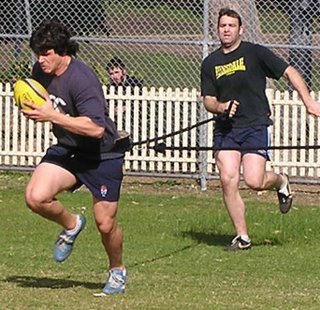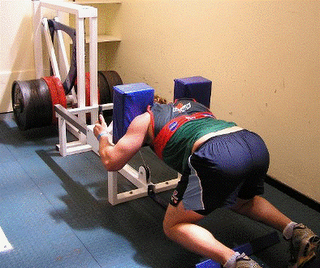Another remarkable statistic is that all but one of the Grand Final winning First Grade team were products of the Club's own Colts program. In recent years Sydney University has become one of the great nurseries of rugby talent, arguably producing more professional players than any other club in the world.
Rugby at the University has evolved into a comprehensive and cohesive system involving the employment of three full-time coaches - Head Coach, Billy Millard; Director of Rugby, Damien Hill; and Colts Coordinator, Nick Ryan.
Over the past three years the Club has been developing an Elite Development Squad (EDS) program for its top grade and colts players. Utilising one of the best equipped gymnasiums in Australian rugby, players train for eleven months of the year and undertake four weights sessions per week off-season and a lesser number while playing. The squad also has on-campus access to physiotherapists, doctors and nutritionists plus regular dietary supplementation. Thus, even though the squad members are not paid, they train in a very professional environment.
Emphasis on basic strength development
Strength and conditioning in the EDS program has been devised and is administered by the University's Athlete Development Manager, Martin Harland. His programs for rugby players place a high degree of emphasis on basic strength development and rugby-specific fitness. A distinguishing feature of his approach is a concentration on heavy lower body work through exercises such as squats, deadlifts and cleans.
Harland's rugby training regimen also requires backs to undertake the same rigorous basic strength routines as forwards. Many strength and conditioning coaches reserve the heavy "grunt" work for forwards, or even restrict it to the tight five. Exposing backs to very serious weight training has produced a quite extraordinary outcome, as outlined in the article, "Building bigger and stronger rugby players - the Sydney University experiment" The average body weight of the 2006 Sydney University First Grade backline was between 2.2 and 4.2kg heavier than that of the backs in the Wallabies and the four Australian Super 14 squads.

Having achieved a strong foundation of basic strength and greater body mass, Martin Harland is then able to focus on speed and explosiveness in his players. The photo at right shows two of those players - Tom Carter and David Lyons whose combined body weight is 225kg - working on developing explosive leg drive on the training paddock.
Use of the ScrumTruk

From the inception of the EDS program the MyoQuip ScrumTruk has been a core component of the strength training of the Sydney University players. It is a rugby-specific apparatus that targets the large mass leg extensor muscles, specifically the gluteal and quadriceps groups.
The ScrumTruk has proven to be of particular value in sports like rugby and rowing where back problems are common. Its operation in the horizontal plane makes it a very effective substitute for the barbell squat.
How well does heavy gym work translate to the playing field?
Size and strength are not necessarily the determining factors in playing success in rugby. Obviously the innate ability of players and the quality of their coaches are the most important ingredients. However, the unprecedented success of the Sydney University Club in the past two seasons suggests that the application of modern strength training techniques has great potential for enhancing individual and team performance. Players can become very significantly bigger and stronger without sacrificing their effectiveness as players.
University's final two First Grade games for the season - both against an equally famous club in Randwick - are confirmation that increased strength and body mass do not have to compromise fitness and mobility.
In the Major Semi-Final University were behind 18-6 with only 10 minutes remaining but managed to draw level at 18-all on the stroke of full-time, sending the match into 10 minutes each way of extra time. University stormed home to a final scoreline of 31-25. Sydney University's own scribe, Graham Croker, noted:
"The innovative and highly successful Harland program bore fruit when the Students lifted the tempo of the game in the closing stages to finish on top as the extra minutes took their toll on the hosts."
Two weeks later the two teams met again in the Grand Final. As the industrious Croker reported:
"The Students led 13-nil after a hard-fought first half, but found themselves with their backs to the wall for much of the second half as Randwick dominated possession and position.
"With the final whistle sounded, the Wicks kept the ball in play metres from the University line for 18 phases – interspersed by a penalty in front of the posts – as the Students tackled themselves to a standstill. ...
"While 16-10 will go in the records as the official score, the more telling statistic was: Sydney University 307 tackles, Randwick 103 tackles.
"Having defeated Randwick in 20 minutes of extra time in the final two weeks earlier, and then held their line for most of the second half in the grand final, fitness and the ability to maintain a defensive structure won the day for the University."
Sydney University's systematic application of the disciplines and structures of professional rugby to a squad of players still in the development phase must surely be a template that other clubs will be driven to emulate.
rugby
Sydney University
strength training
ScrumTruk